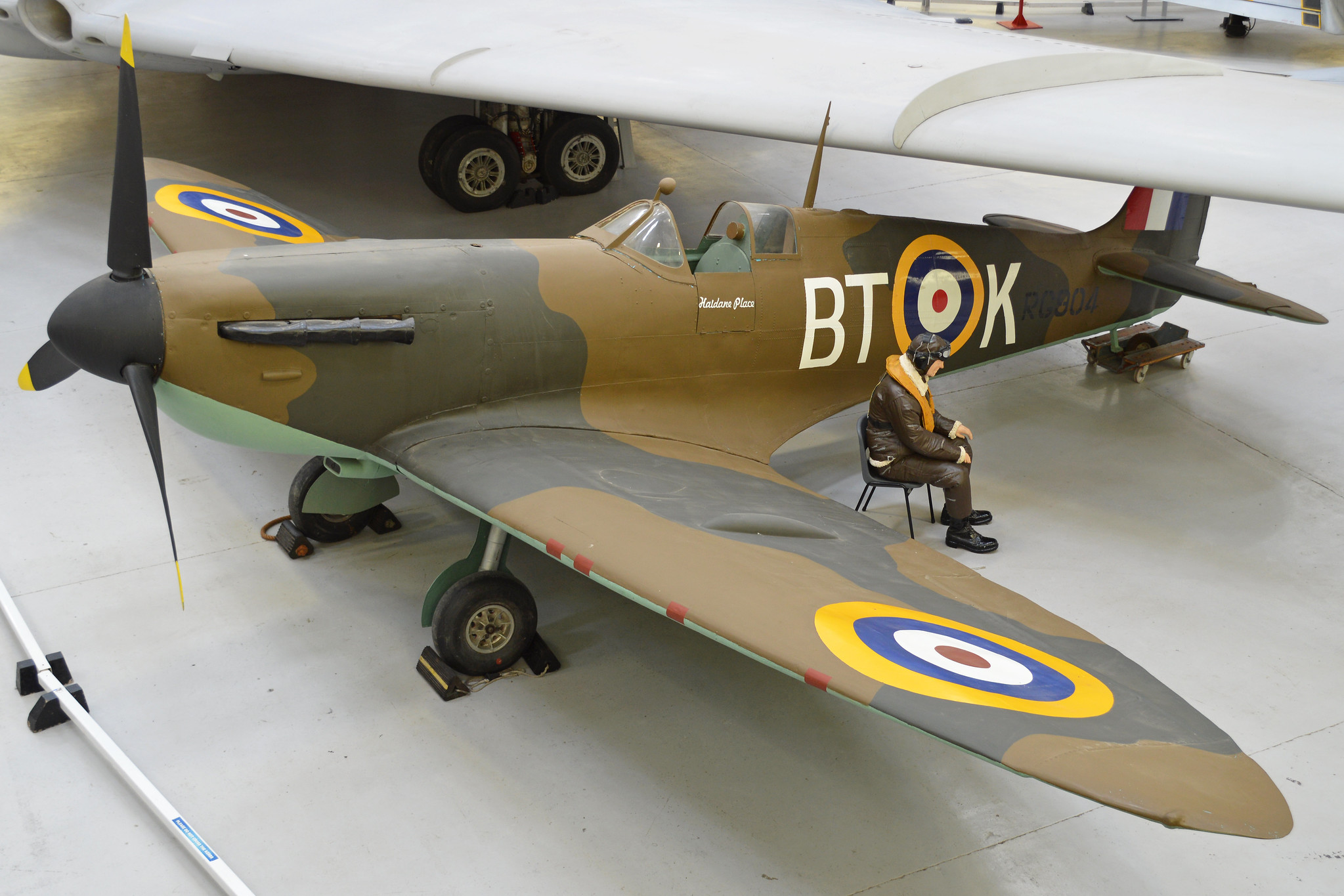Written by Tony Pratley.
The story of the Battle of Britain, when written down, almost always begins with a quote. It is not a rule, more a convention. ‘What General Weygand called the Battle of France is over. I expect that the Battle of Britain is about to begin.’ Winston Churchill’s famous declaration even introduced the opening title sequence of the film Battle of Britain (1969). Chroniclers in search of something less common do have plenty of choice. King George VI, ‘I feel happier that we have no allies to be polite to and pamper.’ Air Chief Marshall Dowding, ‘thank God we are alone now.’ Even Hermann Goering, ‘we’d forgotten the English fought best with their backs to the wall.’ Any one of these quotes will do and it will set the narrative agenda, telling the reader that the story to follow will be about an extraordinary episode in the life of an exceptional nation. It is an oft-repeated tale – a myth, a ‘memory’, a confection of fact and fiction. Whatever it is, though, is of little concern here. I am more interested in the story-teller. This is because, since the beginning of the 1990s, there have been more and more occasions when words won’t do. Such an occasion will be outdoors and involve a crowd numbered in the thousands, and then a Spitfire flypast will do very well instead.
What impact has this had on our traditional story? We should remind ourselves who told it first. In the late summer of 1940, the Air Ministry’s Historical Branch commissioned Hilary Aiden St George Saunders, who worked under a number of pseudonyms, to write a short popular account of the air fighting that was then drawing to a close. Whatever the intention – whether propaganda, communiqué or reportage – it was a timely intervention. Public perception of the summer-long air fighting was vague and unfocused. Saunders worked quickly, as any good jobbing writer must, and his thirty-two page pamphlet was published in March the following year under the title The Battle of Britain: An Air Ministry Account of the Great Days from 8thAugust-31stOctober 1940.
It was an immediate sensation. Over 300,000 copies were sold on its first day of publication. There were three good reasons for this. The story was a revelation. It managed to bemuse, if not confuse, members of the Air Council. Air Chief Marshall Sir Wilfrid Freeman, Vice-Chief of Air Staff, was one notable sceptic. He would not countenance RAF endorsement of the story Saunders told. That would have to wait until he had moved on to the Ministry of Aircraft Production. On the high street things were different. As an Air Ministry account published under the aegis of His Majesty’s Stationery Office (HMSO) it had more than enough credibility. Above all, its remarkable sales were down to its good news. A battle had been won and, in March 1941, that was welcome news indeed. None of this, of course, explains why Saunders’ account remains definitive, but the reason for that is straightforward. Saunders set down a new national saga. Woe betide the revisionist who would betray the nation.
A quote is worth a thousand explanatory words, so familiar is the story. But it is a story that has lifted off the page and taken to the air. The Battle of Britain Memorial Flight (BBMF) estimates that it performs before over seven million people annually. A further forty Spitfires are flown by civilian operators during the summer air show season, to which only football attracts more spectators. Audiences are impressive today but they were not always so. They only started to markedly grow at the beginning of the 1990s. Why? The answer was the fall of the Berlin Wall and the rise of the politics of identity. It was the beginning of a cultural revolution which has had its impact on the story of the Battle of Britain.
The original story, ‘invented’ by Saunders, is about the nation. It was never about the RAF, for instance, and for this the RAF only had itself to blame. For almost fifty years it sought to deny the Battle of Britain, embarrassed by a defensive victory. Today the story is not about the nation but a tribe, the English. It is the Spitfire’s doing. It was in 1942 that the box-office hit The First of the Few first entwined the story of the Spitfire with that of a typically English genius – visionary, romantic, well-mannered. The film’s director and star Leslie Howard had built a career in Hollywood during the 1930s portraying such. As a patriot, he had returned to England in 1939 determined to do his bit and that would turn out to be The First of the Few. The link he first described would now lie dormant until 1989 and the fall of the Berlin Wall. It had to wait upon that change of narrator.
Post-war, the story told by Saunders was open to interpretation but not revision. Interpretation was how it remained relevant. It survived the rough and tumble of popular culture by being adaptable. Boys who played with their new Airfix plastic Spitfire toys were oblivious to the rhetoric of a nation in arms, a people’s war. Now, however, with a change of narrator, I would suggest the story of the Battle of Britain has at last been revised and not just re-interpreted once again. It is no longer about a nation but a tribe. What it means for its place in British popular culture remains to be seen.
Tony Pratley completed his Ph.D. at the University of Kent in 2018.
Image Credit: CC by Alan Wilson/Flickr.

